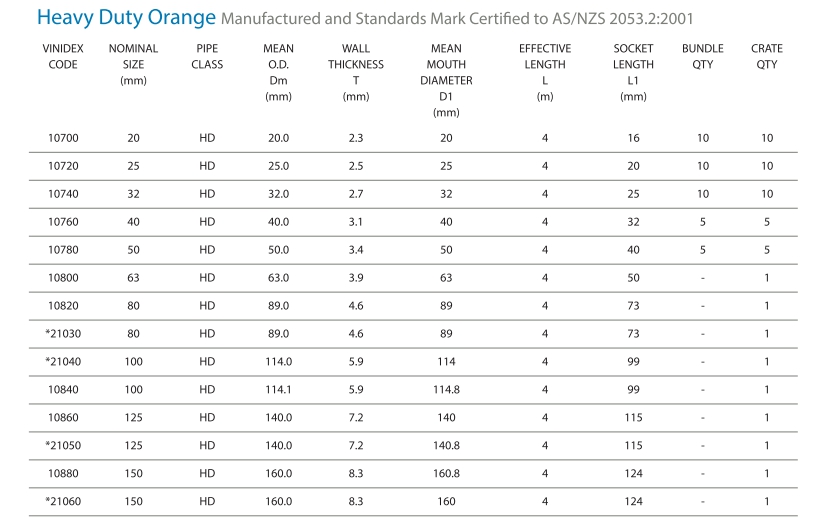Electrical conduit sizes
Posted: , Updated: Category: EngineeringHere is a logic puzzle with useful applications for electrical designers:
Heavy-duty orange electrical conduits manufactured to Australian Standard AS 2053 have outer diameters as follows:
- A 20 mm conduit has O.D. 20 mm.
- A 25 mm conduit has O.D. 25 mm.
- A 32 mm conduit has O.D. 32 mm.
- A 40 mm conduit has O.D. 40 mm.
- A 50 mm conduit has O.D. 50 mm.
- A 63 mm conduit has O.D. 63 mm.
Dear reader, please use the above information to answer this question:
Question: What is the outer diameter of a 150 mm HD orange PVC electrical conduit?
Answer: 160 mm.
Err, what?
Well, maybe the conduit has an inner diameter of 150 mm? Let’s look up the Vinidex Australia catalog for electrical conduits (“Electrical, Communications, and Telstra Products”):
Nope. Given O.D. of 160mm and wall thickness of 8.3mm, the inner diameter of a 150mm HDPVC conduit is 143.4 mm. So there is no dimension of a 150mm conduit that actually measures 150mm.
This trap exists to confuse people attempting to calculate the number of cables that can be pulled through a conduit. Keep these things in mind:
- Conduits less than 80mm are specified by outer diameter. When pulling cables through a conduit, you care about inner diameter. You need to look this up from the catalogue. If you do your calculations based on the outer diameter, your cables won’t fit in the conduit.
- Conduits 80mm and above are specified by… well, who knows? The conduit nominal size bears passing resemblance to the inner diameter, but again, you need to look up the inner diameter from the catalogue.
As an aside, the problem is even worse for British Standard Piping (BSP) pipe sizes. Take the BSP ½-inch pipe, which has:
- thread major diameter of 0.825″
- thread minor diameter: 0.734″
- outside diameter 21.4mm for “light” duty or 21.7mm for “medium” or “heavy” duty (see this page)
- Possible wall thicknesses include “light” 2.0 mm, “medium” 2.6mm, and “heavy” 3.2mm which implies inner diameter of 17.4mm (0.69″), 16.5mm (0.66″), 15.3mm (0.61″)
Which is to say that unlike small electrical conduit, where the nominal dimension does mean something, there is no dimension of a BSP ½-inch pipe - light, medium, or heavy-duty versions - which actually measures half an inch.
Apparently, the ½-inch pipe originally measured 0.50″ internal diameter, but more consistent manufacturing and better materials have allowed thinner pipe walls while maintaining the same mechanical properties. (The less-charitable interpretation is that pipe manufacturers are cheapskates who want to save money by selling thin-walled pipes.)
